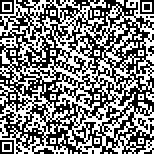| 方 敏,陈梦圆,刘璐璐.基于量子点标记探针技术的肝癌细胞体外生长模式研究[J].肿瘤学杂志,2018,24(2):114-118. |
| 基于量子点标记探针技术的肝癌细胞体外生长模式研究 |
| Study on in Vitro Growth Pattern of Hepatocellular Carcinoma Cell Line HCCLM9 Based on Three-dimensional Cell Culture and Quantum Dots Molecular Imaging |
| 投稿时间:2017-04-15 |
| DOI:10.11735/j.issn.1671-170X.2018.02.B007 |
|
 |
| 中文关键词: 肝肿瘤 量子点 三维培养 肿瘤侵袭 |
| 英文关键词:hepatocellular carcinoma quantumn dots three-dimensional cell culture tumor invasion |
| 基金项目:浙江省医药卫生科技项目(2016KYA048);浙江省自然科学青年基金项目(LQ17H180003) |
|
| 摘要点击次数: 2445 |
| 全文下载次数: 541 |
| 中文摘要: |
| 摘 要:[目的] 建立肝癌细胞体外三维培养模型,模拟在体肿瘤微环境,在体外研究肝癌细胞侵袭转移的生物学行为特点。[方法] 基于Matrigel制作三维基质模型,跟踪观察不同培养时间的细胞形态并三维重建,同时利用荧光量子点标记分子探针实时监测HCCLM9的形态学以及动力学特征。[结果] 在该三维培养模型中,HCCLM9细胞呈现出典型的肿瘤侵袭多步骤特征,包括:克服衰老,局灶性增生活跃,优势克隆侵袭。HCCLM9细胞在接种后不同时态,细胞及细胞间展现出不同形态,呈现出血管拟态及不规则克隆,同时伸出伪足,促进细胞变形,并向四周浸润生长,证明肝癌细胞具备自身变形能力。[结论] 本研究成功建立体外人肝癌细胞培养三维模型,表达MT1-MMP的伪足以及血管形成在肝癌侵袭转移过程中起关键作用。 |
| 英文摘要: |
| Abstract:[Objective]To establish a new in vitro platform to study the invasive behaviors of HCC cells based on the three-dimensional cell culture and quantum dots molecular imaging. [Methods]By the Matrigel based three-dimensional cell culture platform,the cell morphological and cell growth characteristics were observed by inverted microscope and laser confocal microscope at regular time intervals. Cell invasion features were monitored by quantum dots based real-time molecular imaging techniques. [Results] On this three-dimensional cell culture platform,HCCLM9 cells exhibited typical multi-step invasive behaviors,including reversing cell senescence,active focal proliferation and dominant clones invasion. During the process,cells under the environment of three-dimensional cell culture showed spatio-temporal characteristics of biological behaviors. Cells fused first on the surface of matrix,then gradually infiltrated and migrated into deep matrix. The vasculogenic mimicry was clearly showed based on the quantum dots molecular imaging. In addition,cells in early stage mainly formed a mesh structure without clones or with few small clones whose edge was clear and smooth,and the cells were closely interconnected. As cellular growth continued,cell clusters gradually formed a large irregular clone with unsmooth and prominent edge,while the other remaining cells extended invadopodia. The invadopodia promoted cellular deformation and infiltrative growth by coordinating extra cellular matrix degradation with cell motility. The expressions of MT1-MMP in invadopodia were prominent based on the quantum dots immunostaining. [Conclusion] A novel three-dimensional cell culture platform has been successfully established ,which in combination with quantum dots based molecular imaging,could mimic the in vivo tumor microenvironment and facilitate the study of invasive behaviors of HCC cells. |
|
在线阅读
查看全文 查看/发表评论 下载PDF阅读器 |